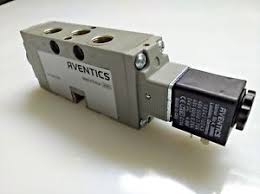Sharing of the working principle of AVENTICS cylinder
Sharing of the working principle of AVENTICS cylinder
As a pneumatic actuator, the AVENTICS cylinder generates energy conversion through air compression to generate power energy. How does the AVENTICS cylinder work? What is its structure? How does it work?
Pneumatic actuator is an energy conversion device that converts the pressure energy of compressed air into mechanical energy to drive the tissue to complete linear reciprocating motion, swing, rotation or impact. Pneumatic performance components are divided into two categories: cylinders and gas motors. The cylinder is used to provide linear reciprocating motion or swing, output force and linear velocity or swing angular displacement. Air motors are used to provide continuous reverse motion, output torque and speed. Pneumatic control components are used to adjust the pressure, flow and direction of the compressed air to ensure that the performance organization operates normally in accordance with the prescribed procedures. Pneumatic control components can be divided into pressure control valves, flow control valves and directional control valves according to their functions.

1. AVENTICS cylinder structure and working principle
Take the most commonly used single-piston rod double-acting cylinder in the pneumatic system as an example, and explain that it is composed of a cylinder cylinder, a piston, a piston rod, a front end cover, a back end cover and a seal. The inside of the double-acting cylinder is divided into two chambers by the piston. A cavity with a piston rod is called a rod cavity, and a cavity without a piston rod is called a rodless cavity. When the compressed air is imported from the rodless cavity, the rod cavity is exhausted. The force formed by the pressure difference between the two cylinders on the piston overcomes the resistance load to push the piston to move, so that the piston rod is extended. When there is an intake port and no exhaust port in the piston rod cavity, the piston rod retracts. If there is a rod cavity and a rodless cavity alternately air intake and exhaust, the piston realizes reciprocating linear motion.

2. Classification of cylinders
There are many types of cylinders, which are generally classified according to their structural characteristics, functions, driving methods or installation methods. The classification method is also different. According to the structural characteristics, the cylinder is mainly divided into two types: piston cylinder and diaphragm cylinder. According to the form of motion, it can be divided into two categories: linear motion cylinder and swing cylinder.





